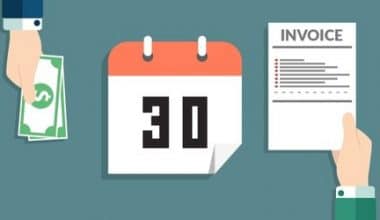An interest-only loan is a type of adjustable-rate mortgage in which the borrower only pays the interest rate during the first few years. That is frequently a low “teaser” rate. This article is designed to have a clear picture of what interest-only loan rate, the home, calculation, and excel calculator.
Interest Only Loan
Following that, the loan is converted to a normal mortgage. However, the interest rate may rise, and the monthly payment must cover some of the principal as well. This considerably raises the payment. After the introductory term, certain interest-only loans require the borrower to pay down the entire balance.
The Benefits of Interest-Only Loan
The first benefit
Is that the monthly payments on an interest-only loan are lower at first than those on a traditional loan. Hence this enables borrowers to purchase a more costly residence.
That works only if the borrower intends to continue making the higher installments after the promotional term ends. Some people, for instance, raise their income before the trial period ends. While others intend to sell the house before the loan matures. The remaining borrowers refinance to a new interest-only loan, but this is no longer feasible if interest rates have risen.
The second benefit
The interest-only mortgage can be paid off faster than a regular loan. Furthermore, extra payments are applied straight to the principle on both loans. However, in the case of an interest-only loan, the lesser principal results in a somewhat lower monthly payment. In a traditional loan, it decreases the debt but keeps the monthly payment the same. Meanwhile, borrowers can pay off their loans faster, but they won’t notice the benefit until the debt is paid off. Borrowers can profit from an interest-only loan right now.
The third benefit
The final benefit of an interest-only loan is the flexibility it gives. Borrowers, for instance, can allocate any extra money, like bonuses or promotions, to the principal. They won’t perceive a difference in their standard of living this way. However, If they lose their jobs or have unforeseen medical expenses, they can return to paying only the interest. For diligent money managers, an interest-only loan outperforms a typical mortgage.
The Downsides of Interest-Only Loan
First disadvantage
For starters, interest-only loans are risky for borrowers who are unaware that the loan will convert. When the teaser rate ends, they frequently cannot afford the higher payment. Others may be unaware that they have no equity in their home and that if they sell it, they would receive nothing.
The second disadvantage
It affects people who are relying on new employees to fund the higher salary. If that does not happen, or if the current employment is lost, the bigger sum is a tragedy. Others may intend to refinance, but if interest rates rise, they will be unable to do so.
Finally
The third risk is a drop in property prices. This disadvantages homeowner who intend to sell their home before the loan turns. When the property boom stopped in 2006, many homeowners were unable to sell because their mortgage was greater than the value of their homes. Only a refinance on the new, lower equity value would be put into consideration by the bank. Unfortunately, homeowners who were unable to afford the higher payment were compelled to default on their mortgage. Many people lost their homes as a result of interest-only loans.
Different Types of Interest-Only Loan
There were numerous forms of interest-only subprime loan available. The majority of these were established after 2000 to meet the demand for subprime mortgages. Moreover, banks began using mortgage-backed securities to finance their loans. Because these derivatives were so popular, the underlying mortgage asset was in high demand. In truth, interest-only loans were a major contributor to the subprime mortgage catastrophe.
Here’s a breakdown of these unusual loans. Because of their destructive nature, many are no longer available.
- Option For the first five years, borrowers could determine their monthly payment amount with an ARM loan. ARM is an abbreviation for adjustable-rate mortgage.
- Negative amortization loans added to the principal each month rather than subtracting from it.
- Balloon loans demand that the whole loan be repaid within five to seven years.
- Borrowers that used no-money-down loans were able to obtain a loan for the down payment.
Interest Only Loan Calculation
The Interest Only Loan Calculation calculates your payment with just two variables: the loan principal outstanding and the annual calculation interest rate. Your monthly interest payment will display after you click “Calculate Interest Only Payment.”
Terms and Definitions for Interest-Only Loan Calculation
Principal The loan’s face amount, which represents the initial quantity invested or lent.
Interest – Money paid on a regular basis at a set rate for the use of borrowed funds or for deferring debt repayment.
Interest Rate – The fraction of loans charged to the borrower as interest, often represented as a yearly percentage of the amount outstanding.
Mortgage Payment – The amount of money charged on a monthly basis for a mortgage, which usually includes both interest and principal.
Mortgage – A debt instrument secured by the collateral of specified real estate property, which the borrower is obligate to repay over a certain period of time.
Loan Term – The number of years the borrower must pay back the loan.
Interest-Only Loans — loans in which the borrower only pays interest on the principal debt for a predetermined period of time while the principal balance remains unaltered.
Home Interest Only Loan
On an interest-only home mortgage loan, the borrower only pays the interest on the mortgage through monthly payments for a fixed duration. Typically, the tenure lasts between 5 and 7 years. After the term expires, many people refinance their homes, make a lump sum payment, or begin paying off the loan’s principal. Nevertheless, when the principal is paid, payments skyrocket.
Who Should Think About An Interest-Only Home Loan?
If the borrower meets the following criteria, an interest-only home loan mortgage may be considered:
- Desire to own a larger home right now.
- Understand that the house will need to be sold quickly.
- They want a lesser initial payment and are certain that they can deal with a substantial payment increase in the future.
- They are very positive that investing the money elsewhere will yield a considerably higher rate of return.
Is It Possible For Me To Get An Interest-Only Loan?
Despite the fact that there are numerous hazards, interest-only mortgage payments may be the best option for the borrower if you meet the following conditions:
The current income is low, but it is clear that it will rise in the future.
The equity in the home is substantial, and the money will be use for additional investments or principal payments by the borrower.
The borrower’s income is erratic, and he desires the freedom to make investments.
Interest Only Loan Rate
Interest-only loan rate do not meet the Consumer Financial Protection Bureau’s (CFPB) standards for Qualified Mortgages (QMs) (CFPB). In fact, those standards expressly state that an interest-only loan rate is not permitted. As a result, lenders who offer them lose important legal safeguards that they would otherwise have for ensuring the borrower’s ability to repay the loan. As a result, lenders face an increased risk with these loans, and their rates are slightly higher as a result.
The interest-only loan rate is not always high. In other situations, they may only be a quarter of a percentage point higher than a comparable fully amortizing jumbo loan. Rates, however, will vary greatly from lender to lender and depending on the borrower’s qualifications. Moreover, the higher your credit score, the larger your down payment, and the greater your financial reserves. And the more probable it is that lenders will offer you their best interest-only loan rate.
Do Interest-only Loans Have Higher Interest Rates?
the drawbacks of interest-only mortgages. First off, compared to normal mortgages, these loans often have higher interest rates. Only by deferring the main payment to a later date can the monthly cost decrease.
What Is an Interest-only Loan for a Year?
Simply defined, an interest-only mortgage is one in which you only pay interest for the first few years of the loan, resulting in lower initial monthly payments.
How Long Is an Interest-only Loan Valid?
An interest-only mortgage, therefore, what is that? Simply said, for a set length of time, typically five to ten years, borrowers are only required to pay the interest for the term as well as any costs. As a result, the payments are much lower throughout this time than they would be with a principal and interest mortgage.
Is Paying Interest Only Worth It?
A principal and interest loan would not likely have a higher interest rate. As a result, you pay more over the loan’s term. During the interest-only term, you don’t make any principal payments, so the loan balance stays the same. After the interest-only term, your repayments will increase and might not be manageable.
Banks Offer Interest-only Loans, Right?
A mortgage with Interest-Only Payments: Depending on your credit history, interest-only loans are an option. These loans require that you pay interest only for a predetermined amount of time before making principal and interest payments for the remainder of the loan term.
Why Do People Take Out Loans With Simple Interest?
Investors can maximize their tax-deductible expenses with interest-only loans. Investors frequently obtain interest-only loans in order to maximize their tax deductions because the interest payments on investment loans are tax deductible.
If I Have an Interest-only Mortgage, May I Sell My Home?
As previously stated, you must repay the entire loan balance when the period of an interest-only mortgage expires. You have the choice to sell your house if you no longer wish to live there and utilize the proceeds to pay down your loan.
Is It Simple To Be Approved for an Interest-only Loan?
Who is eligible for an interest-only mortgage is governed by the specific policies of each lender. But generally speaking, the standards are stricter than for other kinds of mortgages. A 20% down payment, a credit score of 700, and a modest debt-to-income ratio are likely requirements.
Conclusion
An interest-only loan is a type of adjustable-rate mortgage in which the borrower only pays the interest rate during the first few years.
Interest Only Loan Rate FAQ’s
Why would you get an interest only loan?
Interest-only loans offer an alternative to paying rent, which can be expensive and uncertain. If you have irregular income, an interest-only loan can be a good way to manage expenses. You can keep monthly obligations low and make large lump-sum payments to reduce the principal when you have extra funds.
Are interest only mortgages a good idea?
Interest-only mortgages can seem enticing due to the lower monthly payments that they require you to make. This can seem like a good offer to many people because it means that the amount they pay back each month is hugely smaller than it would be on a standard mortgage.
Is interest-only loan good for first time buyers?
Interest-only mortgages are beneficial for first-time home buyers. … These borrowers often pay interest-only payments during slim months and pay extra toward the principal when bonuses or commissions are received.
Can I sell my house if I have an interest-only mortgage?
If you are buying to let, an interest-only mortgage can be more convenient, as it keeps your overheads lower, and when the term expires you can just sell the property to repay the loan
- Top Ten Online Businesses That Pays (+ 45 home business ideas)
- Dividend Yield Formula: Meaning, Detailed Examples & Free Investor Tips
- PRINCIPAL PLACE OF BUSINESS LLC: Definition & Examples
- Mortgage Brokers: How do Mortgage Brokers Make Money in the US (Updated)
- REFINANCING LOANS: Definition & How it Works (Detailed Guide)






